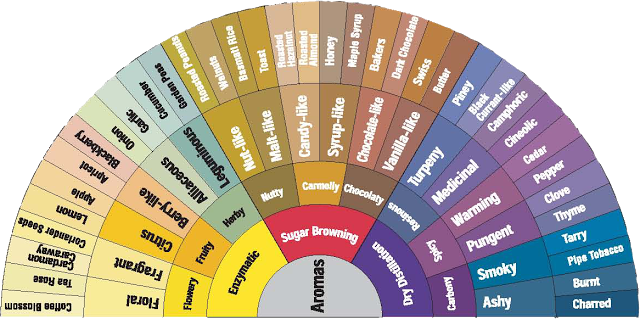Practical paste of coffee grounds | how to effectively dry coffee grounds

For professional baristas, please follow the coffee workshop (Wechat official account cafe_style)
Do you know? In fact, coffee grounds can help us solve many small problems in life, and there are many wonderful uses.
But first you have to finish a very important step-drying coffee grounds. Because if you use the coffee grounds directly without completely removing the moisture from the coffee grounds, the coffee grounds will first become moldy and deteriorate before you can see the effect.
But what kind of drying method is effective? The following is to share the results of our own experiment, and you are welcome to have a try.
* the following methods are all tested with coffee grounds brewed with 12g coffee powder. The drying time may vary according to different conditions, which can be used for reference.
(1) Sun warm-up method
Step 1. Find a place that is sunny and well ventilated (but not to strong winds).
Step 2. Take a plate-shaped container, cover it with several layers of newspaper, and then cover with coffee grounds
Coffee grounds as flat as possible, the thickness is thin, the larger the contact area with the air, the better.
Step 3. It will dry after about 2 days.
* when you think of it, you can turn the coffee grounds over to help you get heated evenly.
(2) easy microwave method
Step 1. Plug in the microwave oven and preheat it.
Step 2. A microwave container is used to hold coffee grounds, and a plate container has the best effect.
Spread the coffee grounds as flat as possible so that they are heated evenly.
Step 3. Put it in the microwave oven and set the time for 2 minutes, then you can wait for the dry coffee grounds to come out of the oven.
* it can be put back into the furnace and use the remaining temperature to cool the coffee grounds slowly, which is less likely to reverse the tide.
* it can also help remove the smell from the microwave oven and leave the coffee full of fragrance.
(3) stir-frying in hot pot
Step 1. Pour the coffee grounds into the pot, wok or pan
After the gas stove was turned on a small fire, it began to stir slowly.
Step 2. Keep stir-frying to prevent the coffee grounds from burning until the coffee grounds are completely dry and turn off the heat.
Put it in the pot and cool it.
* make use of the remaining temperature in the pot to cool the coffee grounds slowly to avoid an instant reverse tide as expected.
* it can also help remove the smell of fuel consumption from the pot.
(4) refrigerator cold storage method
Step 1. Find a plate-shaped container, spread three layers of toilet paper, cover and smooth the coffee grounds.
The thickness is thin, so that the larger the contact area with the air, the better the efficiency.
Step 2. Put it in the refrigerator for 2 days and you can completely dry the coffee grounds.
* it can also help remove the smell from the refrigerator.
(5) Rapid baking
Step 1. Spread the coffee grounds on the baking pan and bake in the oven for 2 minutes.
Step 2. After taking out the oven, turn and bake for another 2 minutes, and it's done!
* if it is an oven that can adjust the heat, it is recommended to use a low heat to burn it less easily.
(6) Bowl dryer drying method
Step 1. Spread a thin layer of coffee grounds on a flat container and dry it in a bowl dryer.
It can be dried together with other tableware to be dried for 40 minutes.
Step 2. After baking, take it out and mix it, then put it in and dry for 40 minutes.
Repeat the above steps and bake for 3 times, then you can get the dried coffee grounds.
(7) Electric heater heating method
Step 1. When you need an electric heater when it's cold, let the coffee grounds warm together.
Spread a thin layer of coffee grounds on a flat container and place it in front of the electric heater.
Step 2. Set the power to 800W, bake for 3 hours, and then air-dry at room temperature.
Sincere and considerate reminder ~ if there is a large amount of dried coffee grounds at one time and will not be used immediately, you can put it into a glass jar and store it in the refrigerator. Take as much as you need when you use it, so you don't have to worry about the coffee grounds going bad! Join us and make life better with coffee grounds!
* pay attention to the safety of electricity when using high-power appliances to avoid accidents.
Important Notice :
前街咖啡 FrontStreet Coffee has moved to new addredd:
FrontStreet Coffee Address: 315,Donghua East Road,GuangZhou
Tel:020 38364473
- Prev

Professional coffee roasting | what fragrance is added by "burning and increasing fragrance"?
For the exchange of professional baristas, please pay attention to the coffee workshop (Wechat official account cafe_style). Since its inception, we have mostly played with foreigners' ideas and baking rhythms, especially Home-barista, Nordic Forum, Scott Rao, Rob Hoos, Cafeculture, WCRC or German SCAE competitions, for no other reason. The information is open enough and the demonstration is easy.
- Next

Drinking coffee is a healthy thing! Refreshing the brain, losing weight and diuresis
Professional barista communication Please follow the coffee workshop (official Wechat account cafe_style) I believe that water people get up early in the morning, in addition to brushing their teeth and washing their faces and drinking a large cup of lukewarm water, it is to have a cup of coffee and start a good day. Every time Douji wants to get up early to make a cup of coffee, Douma will stop me and block the cup that I have poured coffee powder very quickly.
Related
- Beginners will see the "Coffee pull flower" guide!
- What is the difference between ice blog purified milk and ordinary milk coffee?
- Why is the Philippines the largest producer of crops in Liberia?
- For coffee extraction, should the fine powder be retained?
- How does extracted espresso fill pressed powder? How much strength does it take to press the powder?
- How to make jasmine cold extract coffee? Is the jasmine + latte good?
- Will this little toy really make the coffee taste better? How does Lily Drip affect coffee extraction?
- Will the action of slapping the filter cup also affect coffee extraction?
- What's the difference between powder-to-water ratio and powder-to-liquid ratio?
- What is the Ethiopian local species? What does it have to do with Heirloom native species?

